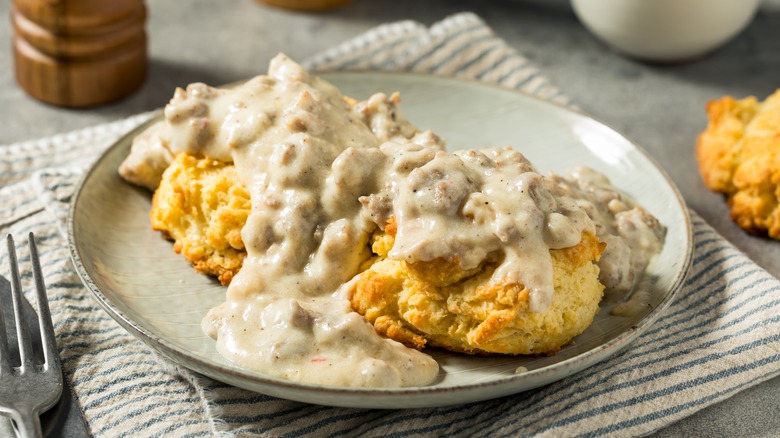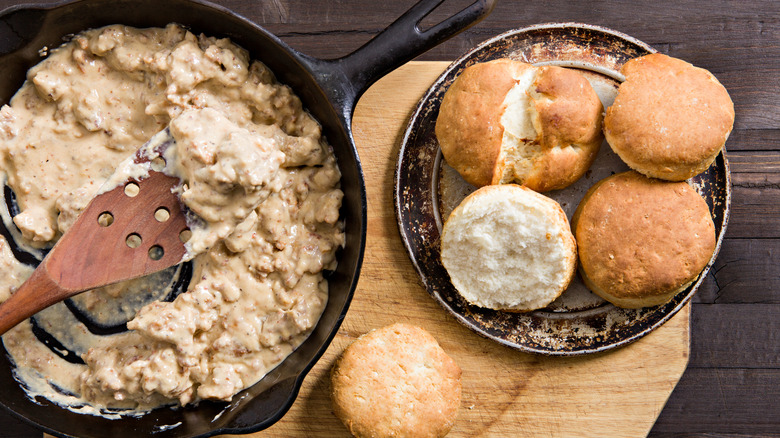The Secret Ingredient That Makes Sawmill Gravy So Delicious
Biscuits and gravy is a quintessential dish in the American South. The charming, satiating meal includes a generous helping of gravy, which offers succulence to the fluffy, flaky biscuits. One particular style of gravy that pairs exceptionally well with the leavened delights originated in the 1880s and is aptly named after where it was invented — sawmills.
Sawmill gravy is a savory sauce that traces its roots to the Appalachian Mountains, where resourceful factory cooks maximized flavor from minimal ingredients. It was a staple in logging camps, as it provided lumberjacks with plenty of fuel for their demanding workdays. Like all gravies, sawmill gravy starts with a roux of fat and starch, and it's the fat that gives the gravy its delicious flavor. Sawmill gravy is made with fat drippings left over from frying pork, typically sausage and bacon.
Drippings can be used in countless recipes, including cornbread, sautéed vegetables, and popcorn, but they are also vital in creating sawmill gravy's creamy base. Along with a roux of flour, milk, salt, pepper, and optional hunks of breakfast sausage, these renderings play a crucial role in the undeniable deliciousness of sawmill gravy, thanks to the umami taste imparted by the fatty substance.
Fat drippings make sawmill gravy extra rich
The beauty of sawmill gravy, in addition to its luscious palate, lies in its versatility. Often served over warm, buttery biscuits, sawmill gravy perfectly complements a slew of other comfort foods like fried chicken, grits, mashed potatoes, hash browns, steak, and poutine.
Historically, sawmill gravy was a testament to necessity and ingenuity. In the kitchens of the 19th century, fat drippings, which might otherwise have been discarded, became a central factor of sawmill gravy, showcasing the inventiveness of the working class who pioneered it. The earliest Southern sausage gravy recipe originally contained cornmeal, giving it a gritty texture before flour became the preferred thickening agent. Over time, sawmill gravy has transformed into a smoother sauce.
Today, sawmill gravy is widely celebrated for its cultural significance. Whether enjoyed in a bustling diner or a cozy country home, smothered over a plate of biscuits or a mountain of scrambled eggs, the hearty relish remains a beloved element of Southern cuisine that embodies the region's enduring spirit of hospitality. Sawmill gravy's rich background (and secret ingredient) provides a tenderhearted reminder of simpler times and the meaningfulness of bringing people together through the power of a good meal. Just ask Dolly Parton, who eats biscuits and gravy weekly and bakes cornbread with fat drippings.

